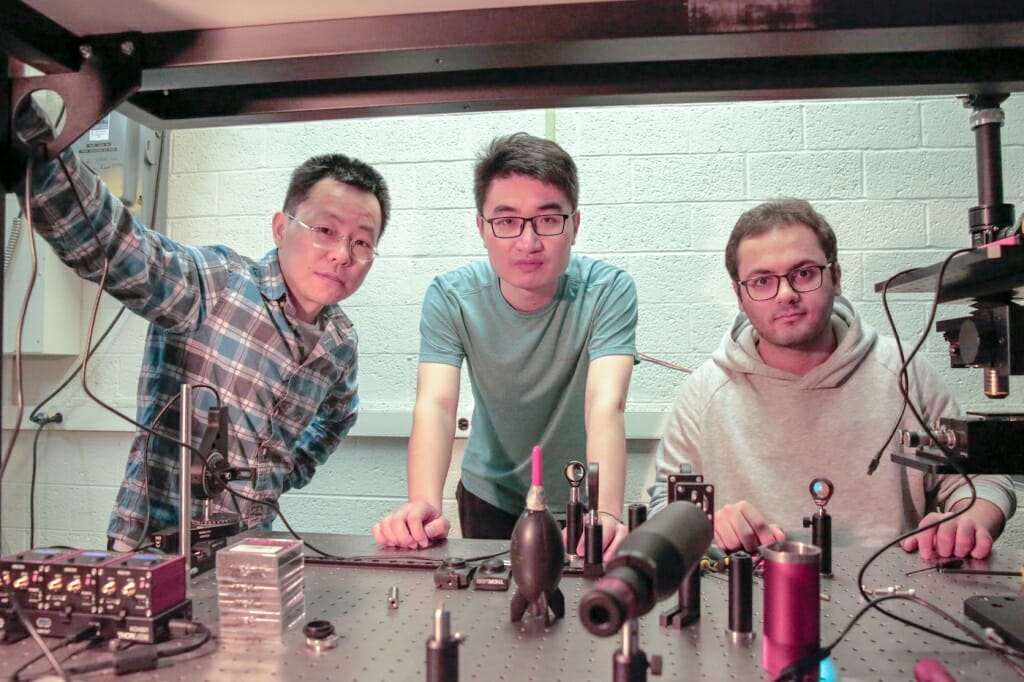
Researchers at the University of Wisconsin-Madison have identified a way to create artificially intelligent glass that is capable of recognizing images without the use of sensors, circuits or a power source, the university said on 8 July.
The glass uses “light propagation” and could be used in smartphones as part of Face ID without draining the battery – and potentially without using any power at all.
“We’re using optics to condense the normal setup of cameras, sensors and deep neural networks into a single piece of thin glass,” University of Wisconsin-Madison electrical and computer engineering professor Zongfu Yu explained in a press release. “This is completely different from the typical route to machine vision.”
He envisions pieces of glass that look like translucent squares embedded with tiny strategically placed bubbles and impurities that would bend light in specific ways to differentiate among different images.
For proof of concept, Yu and his team devised a method to make such glass that identified handwritten numbers. Light emanating from an image of a number enters at one end of the glass, and then focuses to one of nine specific spots on the other side, each corresponding to individual digits. The glass was dynamic enough to detect, in real-time, when a handwritten three was altered to become an eight.
“The fact that we were able to get this complex behaviour with such a simple structure was really something,” Erfan Khoram, a graduate student in Yu’s lab, remarked.
The researchers used a technique similar to a machine-learning training process to design the glass to recognise numbers, except they “trained” an analogue material instead of digital codes, placing air bubbles of different shapes and sizes, and small pieces of light-absorbing materials, at specific locations in the glass.
“We’re accustomed to digital computing, but this has broadened our view,” Yu added. “The wave dynamics of light propagation provide a new way to perform analogue artificial neural computing.”
One advantage is that the computation required is “passive” and intrinsic to the material, which means that a single piece of image recognition could be used multiple times, and another is that the process works at the speed of light as the glass distinguishes between images by distorting light waves.
“We could potentially use the glass as a biometric lock, tuned to recognize only one person’s face,” Yu said. “Once built, it would last forever without needing power or internet, meaning it could keep something safe for you even after thousands of years.”
The glass would be inexpensive and easy to make, although the up-front training process could be time consuming and computationally demanding. Looking ahead to the near future, the scientists’ next move is to find out if the method will work for more complex tasks, such as facial recognition.
“The true power of this technology lies in its ability to handle much more complex classification tasks instantly without any energy consumption,” Ming Yuan, a collaborator on the research and professor of statistics at Columbia University, said.
“These tasks are the key to create artificial intelligence: to teach driverless cars to recognize a traffic signal, to enable voice control in consumer devices, among numerous other examples,” he added.
Unlike human vision, which is very general in its capabilities to discern an unknown number of different objects, the smart glass could excel in specific applications like number recognition, identifying letters and faces, and so on.
“We’re always thinking about how we provide vision for machines in the future, and imagining application specific, mission-driven technologies.” Yu concluded. “This changes almost everything about how we design machine vision.”
University of Wisconsin–Madison graduate students Ang Chen and Dianjing Liu also contributed to the research, with Qiqi Wang of the Massachusetts Institute of Technology.


Leave a Reply